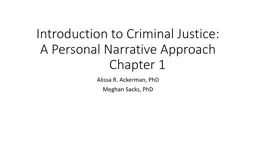PPT-Rural Crime & Justice Center
Author : alexa-scheidler | Published Date : 2015-10-17
A University Center of Excellence Minot North Dakota Identification Opium Cocaine Marijuana Powder MethAmphetamine Rocks Chunks Crystal Pills Drug History in America
Presentation Embed Code
Download Presentation
Download Presentation The PPT/PDF document "Rural Crime & Justice Center" is the property of its rightful owner. Permission is granted to download and print the materials on this website for personal, non-commercial use only, and to display it on your personal computer provided you do not modify the materials and that you retain all copyright notices contained in the materials. By downloading content from our website, you accept the terms of this agreement.
Rural Crime & Justice Center: Transcript
Download Rules Of Document
"Rural Crime & Justice Center"The content belongs to its owner. You may download and print it for personal use, without modification, and keep all copyright notices. By downloading, you agree to these terms.
Related Documents














